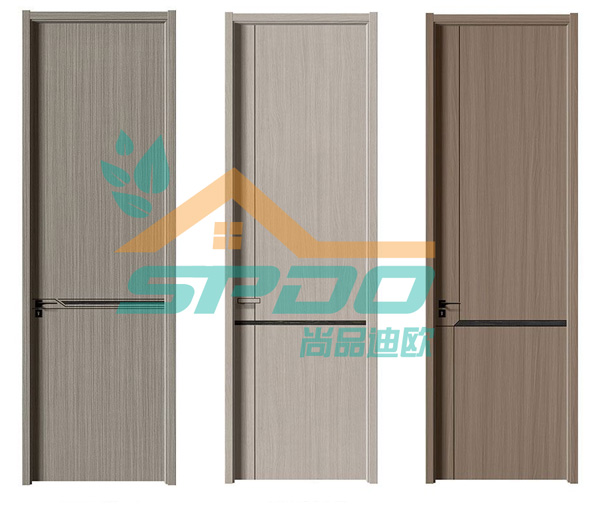What are the differences between WPC Doors and Traditional Wooden Doors?
Cost Comparison
WPC doors are generally slightly more expensive than traditional wood doors in terms of initial investment. This price difference may be due to the limited production of WPC doors, as they are relatively new to the market. However, it is important to consider the long-term costs associated with each option.
While wood doors may have a lower initial purchase cost, they generally require more frequent care and maintenance. This ongoing maintenance can lead to increased expenses in the long run. In contrast, WPC doors, despite their higher initial price, generally require minimal maintenance, resulting in lower long-term costs for homeowners.
It is important to note that the cost of wood doors can vary greatly depending on the quality and type of wood used. High-quality wood doors made from premium woods such as lumber can sometimes be more expensive than WPC doors.

Performance in Different Environments
One of the most significant advantages of WPC doors over traditional wood doors is their superior performance in a wide range of environmental conditions. WPC doors have excellent resistance to moisture, humidity, and temperature, making them ideal for use in areas susceptible to these elements.
Unlike wood doors, which are susceptible to moisture, swelling, and rotting, WPC doors maintain their shape and structural integrity even in humid environments. This makes them ideal for bathrooms, kitchens, and coastal areas where humidity is typically high.
WPC doors also have better resistance to extreme temperatures. They are highly resistant to heat and cold, making them a reliable choice for both indoor and outdoor applications. This consistency across climates means that WPC doors are able to maintain their functionality and appearance over time.
In contrast, wood doors are more susceptible to environmental factors. They are prone to cracking, rotting, or mold in humid environments, and are susceptible to insect infestation. These issues can affect the performance and beauty of the door, requiring more frequent repairs or replacements.
Aesthetic Options
Both WPC doors and traditional wood doors offer a wealth of aesthetic options to suit different preferences and architectural styles. Wood doors are known for their timeless appeal and natural beauty, with unique grain patterns that add personality to any space. They can be easily customized in a variety of sizes, designs, and finishes, allowing homeowners to create a classic or rustic look.
WPC doors, on the other hand, offer a wider range of design possibilities. They can mimic the look and texture of wood while offering a wider range of color and finish options. WPC doors can be molded with strong relief effects and high surface hardness, allowing for intricate designs and patterns.
WPC doors have a wide range of surface treatment options, including laminating, painting, engraving, and adding decorative moldings. This versatility allows homeowners to create a vibrant and varied look based on their preferences, from modern and sleek designs to more traditional looks.
Service Life
WPC doors have a distinct advantage over traditional wood doors in terms of service life. WPC doors typically have a service life of 25 to 50 years, and some high-quality WPC doors can last longer with minimal maintenance. Their extra-long service life stems from their resistance to environmental factors, insect infestation, and corrosion.
Although durable, traditional wood doors typically have a shorter service life than WPC doors. Traditional wood doors typically have a service life of 15 to 20 years, depending on the quality of the wood and the level of maintenance. Moisture, temperature changes, and insect infestation can all shorten the service life of wood doors.
WPC doors have a longer lifespan, which means fewer replacements over time, making them a more cost-effective and sustainable choice in the long run. In addition, their durability ensures they retain their appearance and practicality for longer, without the need for regular repairs or repainting.
Conclusion
WPC doors have revolutionized interior design by combining durability, aesthetics, and environmental friendliness. Their resistance to moisture, pests, and harsh weather conditions, coupled with low maintenance requirements, makes them a smart choice for modern homes and buildings. The versatility of WPC doors, along with their long lifespan and customizable options, gives them an edge over traditional wooden doors in many aspects.
As we look to the future, WPC doors are set to play a crucial role in sustainable construction practices. Their use of recycled materials, energy efficiency, and recyclability aligns with the growing demand for environmentally responsible building solutions. For homeowners and builders looking to combine functionality with style, WPC doors offer a compelling option that meets both practical needs and esthetic preferences.
Hot Tags: #WPC Doors #Traditional Wooden Doors



